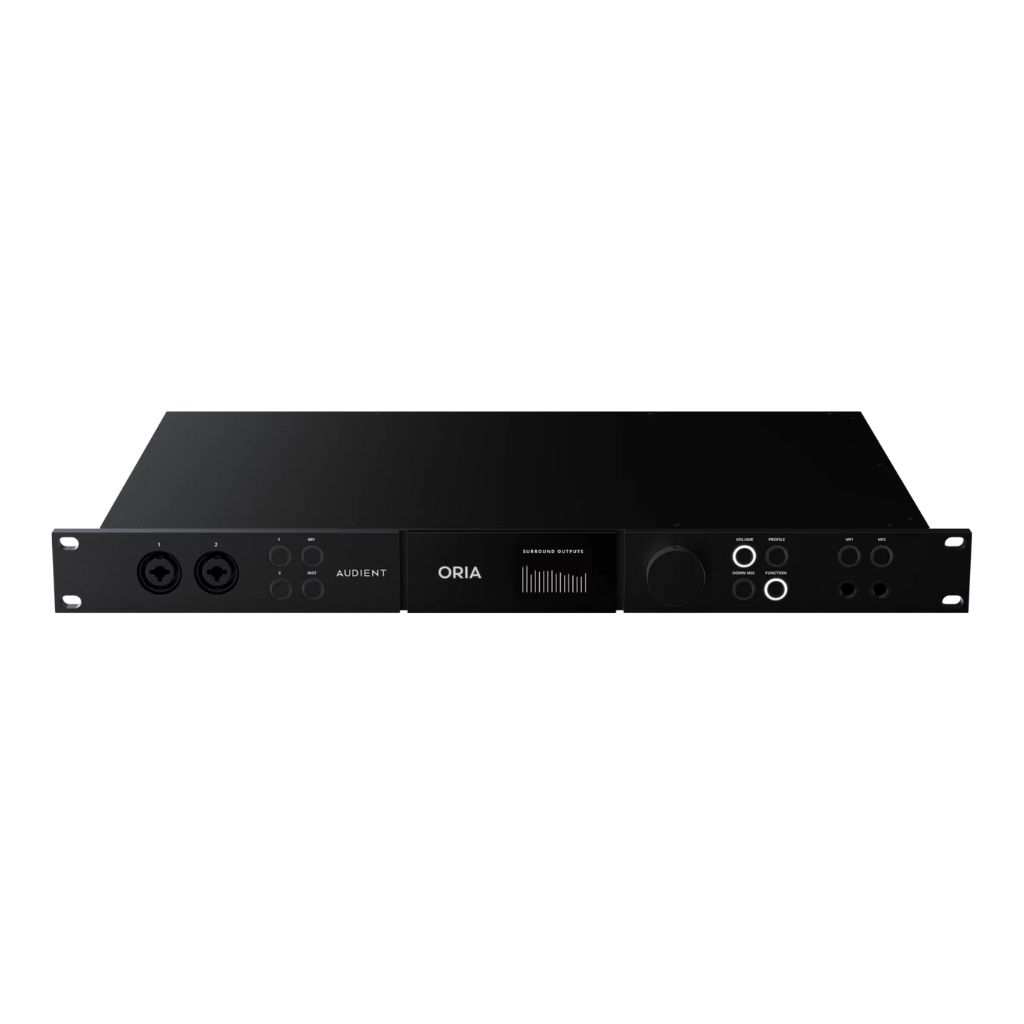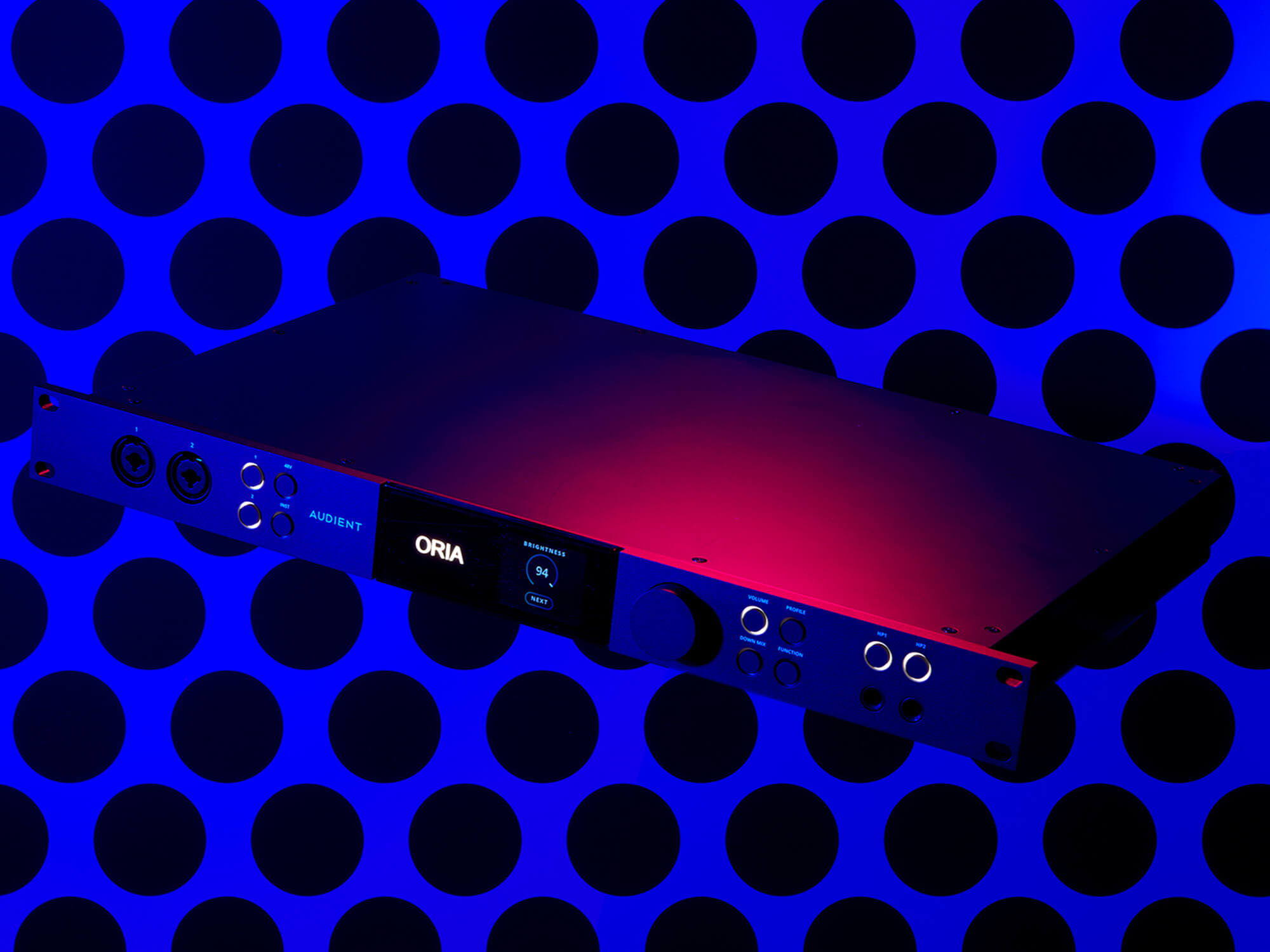
Audient’s ORIA is the Atmos interface that engineers have been waiting for
How Audient worked with a team of audio engineers to make Atmos accessible — and why immersive audio is here to stay
Audient ORIA. Image: Simon Vinall for MusicTech
The age of immersive audio is here. No, really.
Sure, when Apple began its push for Spatial Music in 2021, the initiative was met with a heady mix of excitement and scepticism. But since then, the hype has faded and what’s left is a very real, industry-wide push to establish spatial audio as a new standard for commercially released music.
High-quality immersive home speaker systems are increasingly affordable, the library of spatially mixed music has expanded exponentially, and Apple seems determined to accelerate this trend by offering to pay higher royalties to artists who serve up a Dolby Atmos mix. We’re past the point where this format might have faded into obscurity.
For studio engineers, the surging demand for Atmos mixes has been a blessing and a curse. More work is a positive thing but, on the other hand, getting into the spatial audio game has often meant ad-hoc hardware solutions, workflow bottlenecks, and eye-watering price tags. Or, at least, it did.
Audient, the UK-based purveyor of pro-audio gear, has come up with a solution for audio interfaces in the spatial age – and it’s called ORIA.
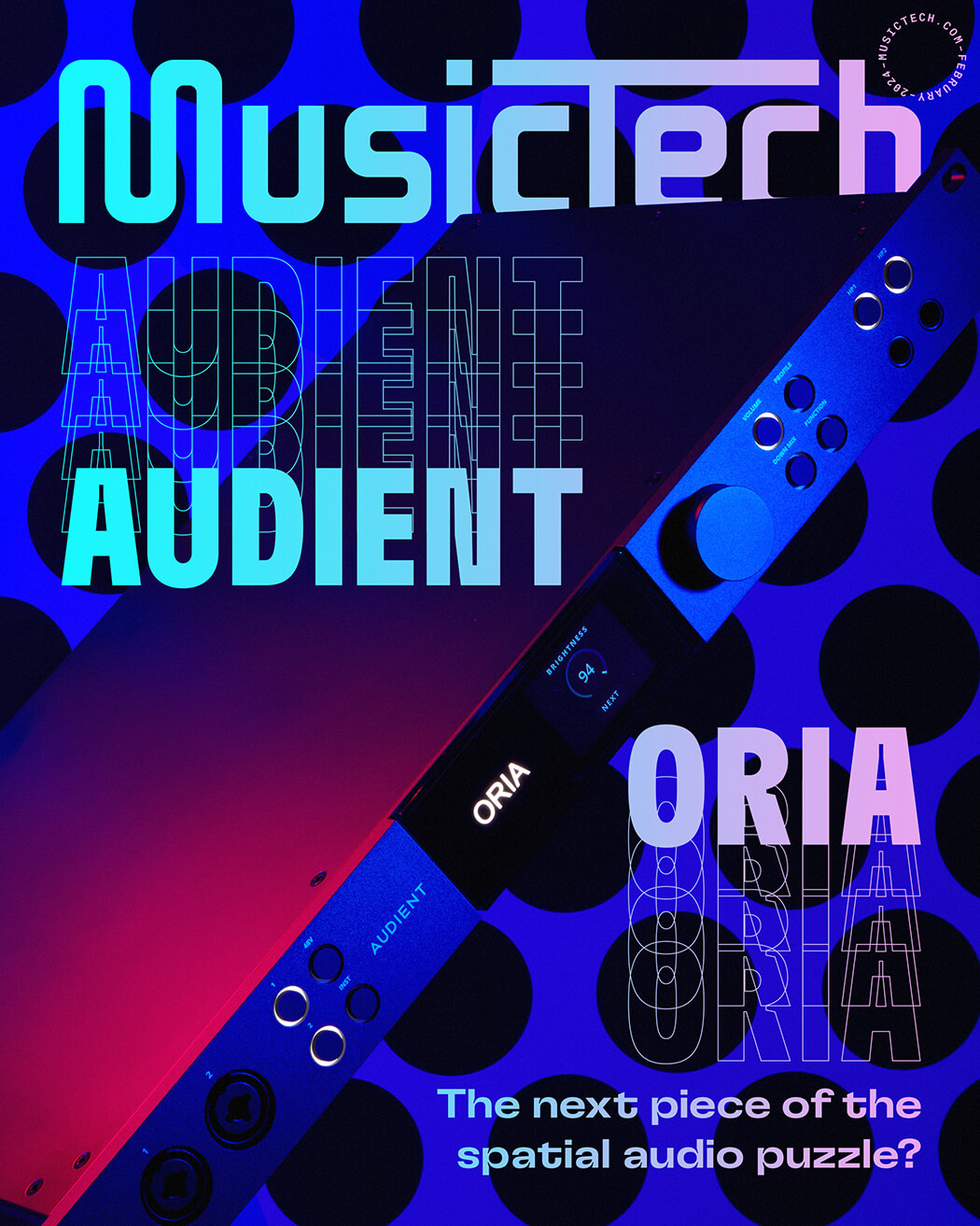
Billed as the first audio interface designed specifically for immersive mixing, it’s an I/O powerhouse. Supporting up to 9.1.6 speaker setups, ORIA is also armed with a pair of stereo line outputs; a further 16 outputs via AES; two independent headphone outs; a couple of analogue mic preamps; two ADAT inputs; and space for a Dante expansion card. And all for £2,520 (€2,885/$2,625)
“A lot of the current market solutions were what we would describe as ‘workarounds’,” says Audient’s director of product and marketing, Andy Allen. “We wanted to develop a purpose-driven solution from the ground up that not only addressed these issues but also made it affordable.”
Easier said than done. ORIA’s design needs to support the most common studio workflows and remove roadblocks while limiting the ‘nice but optional’ features that can drive up a unit’s price tag. To achieve that balance, the company reached out to professionals across the industry for their input.
The team at Present Day Productions were one of many studios tapped to help beta test the ORIA and provide input. Amidst offering mixing and mastering services, manufacturing and selling their own in-house monitors, and running a growing YouTube Channel, the team recently embarked on the challenging journey of building their own Dolby Atmos system.
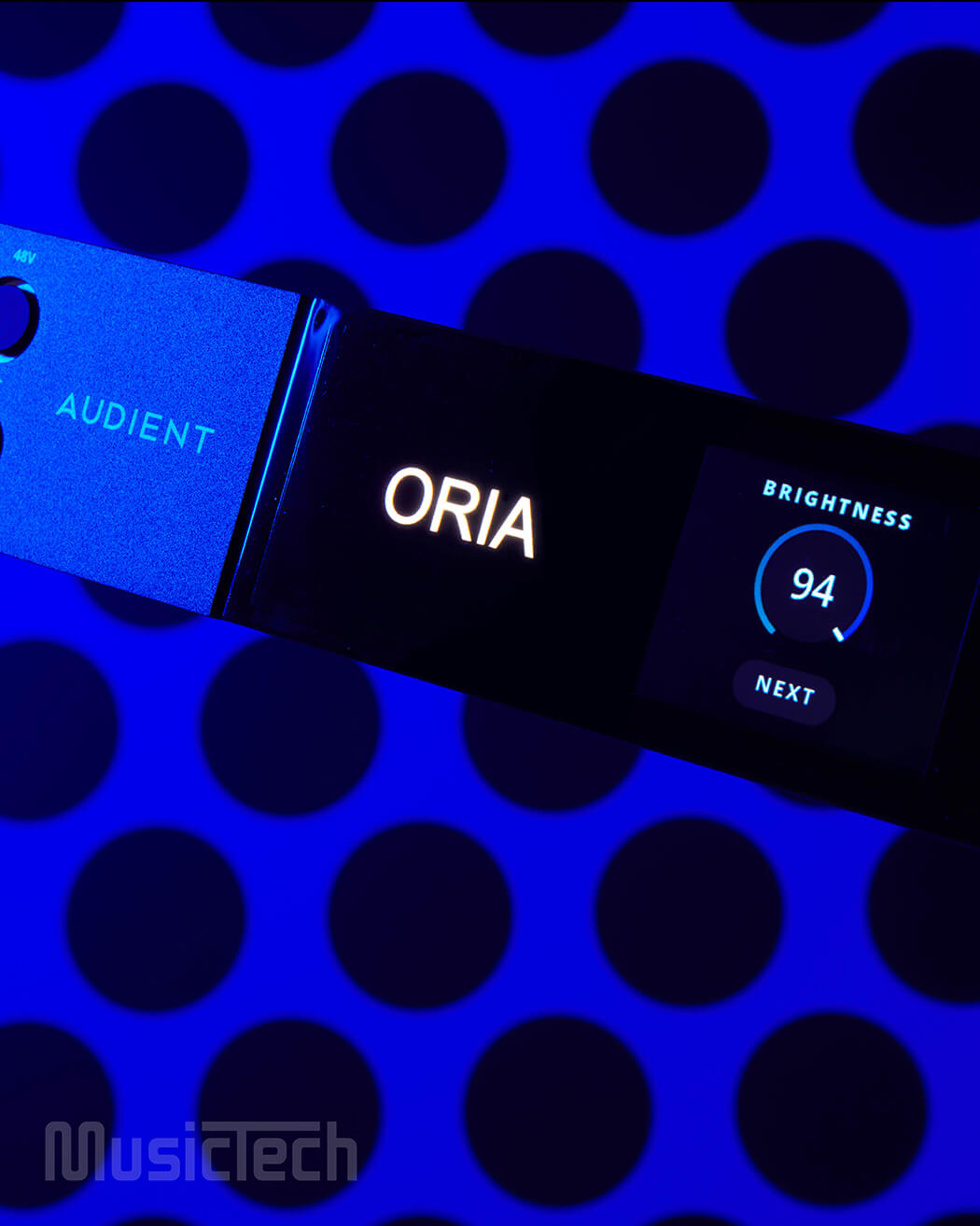
“You would not believe the frustration we’ve had just trying to get audio from A to B without having to spend £10-15,000,” says co-founder and technical director, James Nugent. “The reason why no other manufacturers have yet built a dedicated Dolby Atmos interface, in my opinion, is that they haven’t listened to what end users want. Most interfaces before ORIA, branded as Dolby Atmos compatible, have been after-thoughts or add-ons to existing products.”
Determined to integrate Atmos on a foundational level, Allen says the team at Audient canvassed the opinions of 40 engineers, mixers, composers, sound designers, installers, and technical experts to get input at the earliest stages of the development. “It really became an iterative process,” Allen recalls. “We used the feedback to adapt our original design concepts, then went back around the user group multiple times until we were getting thumbs up across the board.”
Working closely with musicians and engineers is nothing new for Audient – in fact, it’s a core part of its history. Co-founder David Dearden spent much of the 70s building personal studios for the likes of John Lennon, George Harrison, and legendary producer, Gus Dudgeon. From those formative experiences, Dearden developed design principles that would culminate in a series of classic analogue consoles: the DDA AMR24 and Audient’s ASP8024.
Nowadays, the company is perhaps best known for its critically acclaimed entry- and mid-level interfaces, but that legacy of manufacturing excellence is still part of Audient’s DNA. “All of our more recent products have fundamental capture and performance capabilities that are either based on the ASP8024’s original analogue circuits or largely inspired by them,” Allen says. “ORIA continues that philosophy.”
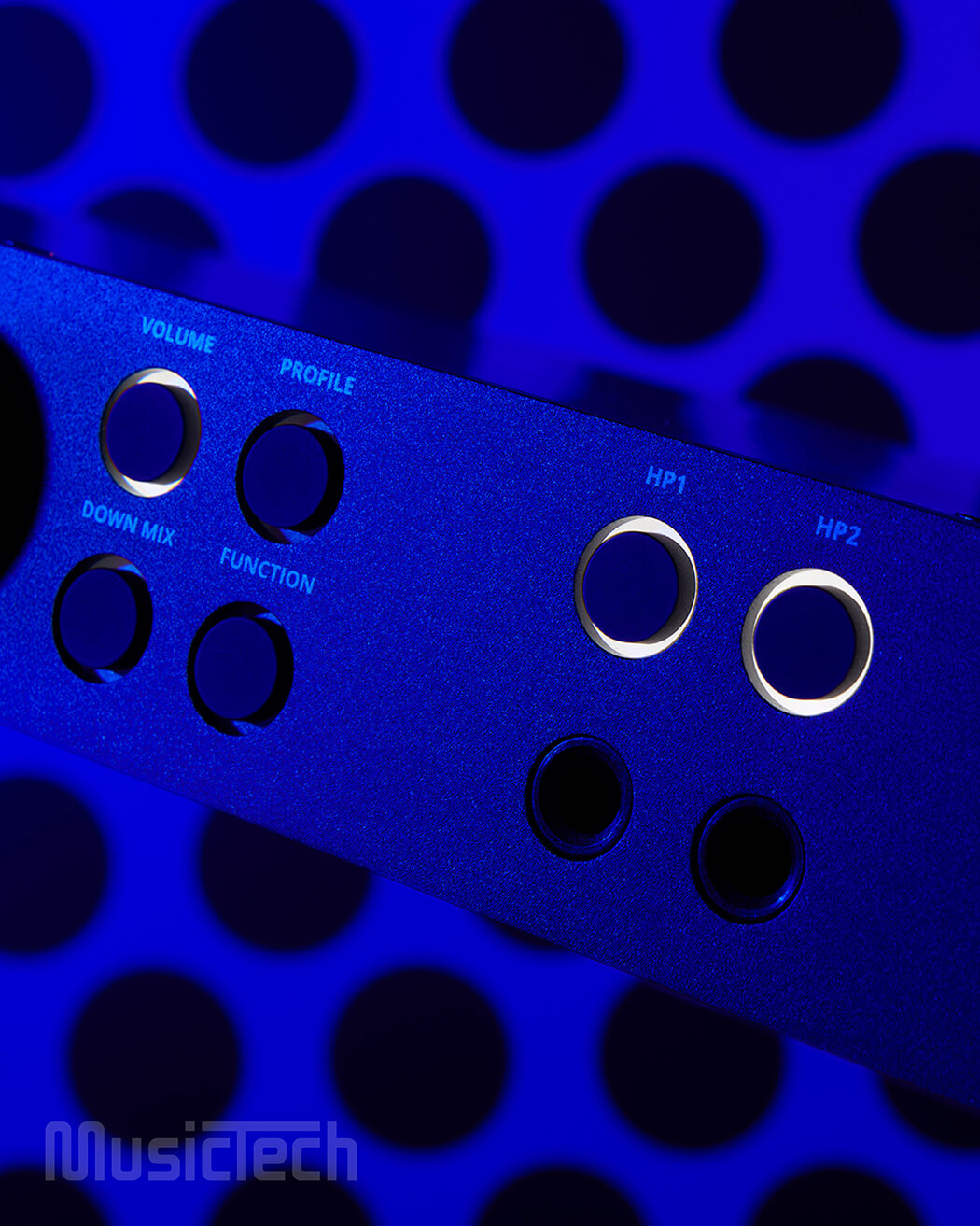
The interface may boast two of the company’s classic mic preamps but make no mistake: this is a device designed for the future. “There are some truly amazing technical innovations taking place inside the box,” Allen assures us. “All of which were built from the ground up specifically for ORIA.”
One of those innovations is the Down Mix button ORIA sports on its ultra-thick face plate. The magic of Atmos has always been its adaptability – whether you’re listening on headphones, a car stereo, or a full-fledged home entertainment system, Atmos will seamlessly serve up the correct mix.
On the studio side, this means that engineers now need to account for many different listening scenarios. Checking that your mix sounds just as slick in binaural as it does in surround sound would seem like a pretty essential part of an Atmos workflow, but achieving this has generally been a costly and convoluted affair. To that end, ORIA’s Down Mix button — which is linked directly to the Dolby Atmos renderer — is said to make the whole process close to effortless. Pressing it will instantly fold down an immersive mix so it can be checked in 7.1, 5.1, binaural, or stereo.
It also makes checking out reference mixes on Apple Music a no-brainer, something Nugent says the Present Day Productions crew were over the moon about. “We spent the last 18 months banging our heads against the wall trying to find a product which would allow us to not only work in Atmos within a DAW but then go and listen to commercial mixes on streaming services. ORIA has given us a working solution.”
“It’s the product we begged manufacturers for, and to see it come to life has been incredible” – James Nugent
Another massive step forward comes in how ORIA handles studio setup. As you go beyond stereo, the process of placing and balancing speakers becomes exponentially more complex. To combat this, Audient partnered with Sonarworks to harness the company’s SoundID Reference technology.
“Working with multi-channel speaker arrays requires a calibrated room, and this is an incredibly technical and difficult process to understand,” Allen explains. “The user first has to precisely measure their room and use the results to level match and time align speakers, apply corrective EQ to deal with room modes, and apply bass management.”
Getting all these factors to line up is complicated enough that many studios just outsource the job, at a significant cost. And even that can be hard enough – just finding an available specialist in studio acoustics can take considerable time. Sonarworks’ calibration software shrinks the whole process down into something that can be sorted in under an hour.
“The Sonarworks partnership was a vital component,” says Allen. “It ensures ORIA users aren’t restricted by lack of knowledge around room calibration or lack of access to professional acousticians.”

Each ORIA comes with a reference microphone and a 60-day trial of the SoundID Reference software. Users who want to continue using their calibrations past the trial period will need to purchase a Sonarworks licence – an additional cost, to be sure, but still less than hiring an expert in room acoustics.
But if you do want to set up everything from scratch — or tweak the calibration profile generated by Sonarworks — there’s an eight-band EQ, trim, delay, and bass crossover options for each individual speaker output.
Crucially, all of this is handled by ORIA’s onboard DSP with no CPU impact on the host computer. The unit can store up to 32 user profiles, each with unique speaker configurations and calibration settings, and recalling profiles is performed via another physical button on the front panel that cycles through four preferred profiles.
Physical buttons are all well and good but, if you like to keep your rack units out of sight and out of mind, Audient has produced both a standalone software application and a companion app for iPadOS. Together, these roll up all the calibration and monitoring controls and make them portable.
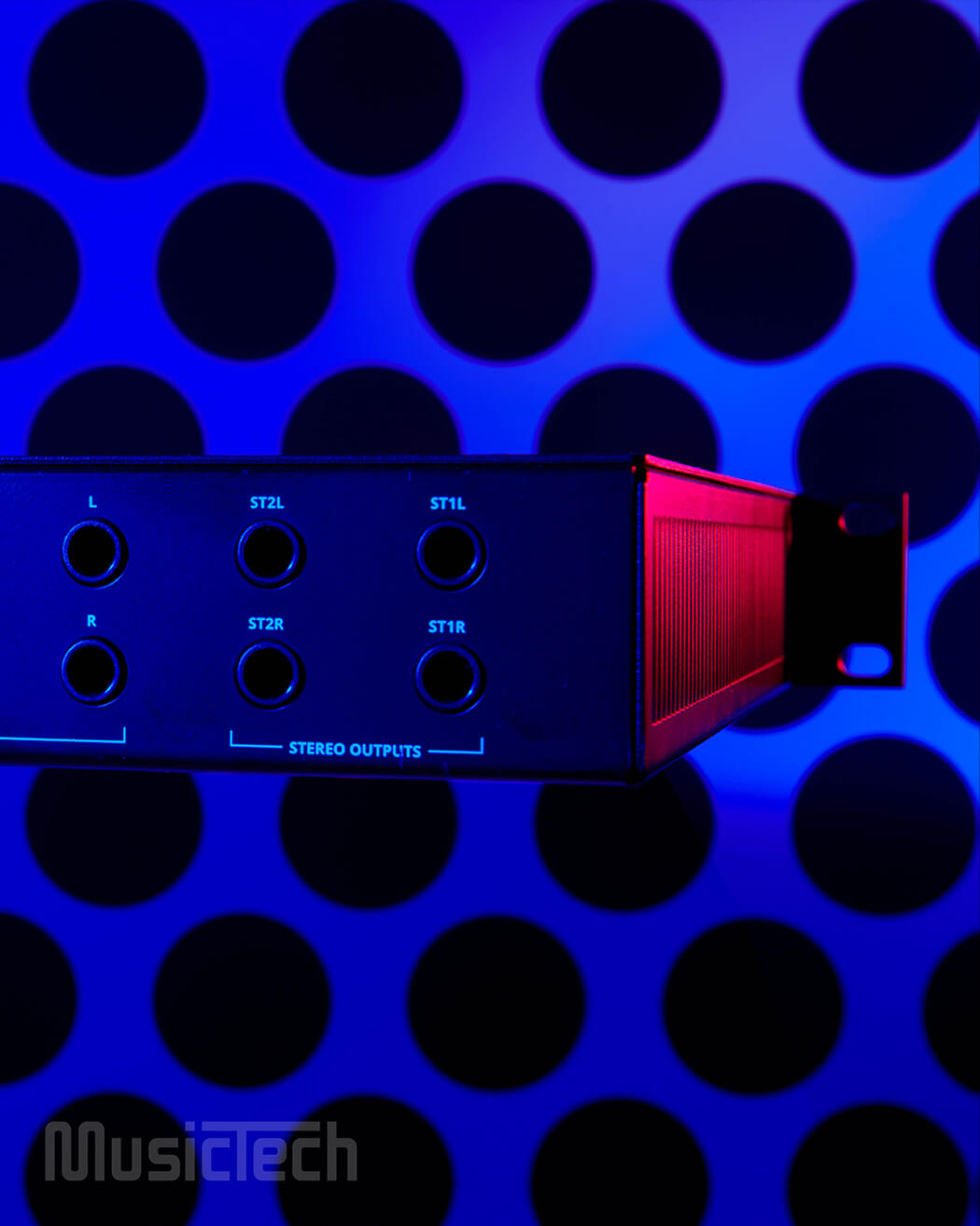
Nugent says that after having ORIA in the studio these recent months, it has streamlined everything from volume control, to physically getting sound to their speakers, to how they monitor their mixes. Each of these, he says, previously required extra, expensive, hardware units.
But the biggest drawcard? “Simplicity!” exclaims Nugent. “It just works, in every way. It’s the product we begged manufacturers for, and to see it come to life has been incredible.”
ORIA may keep things simple, but it also manages to stay versatile. If you’ve invested in your existing studio setup then the ADAT inputs allow the unit to function as a standalone monitoring device, if you’re just getting started then it becomes a one-stop-shop for Atmos mixing. If you’re working with video there’s a global delay for picture sync, if you need to do small-scale recording or voiceovers there’s the in-built mic preamps.
It’s a design that recognises the working reality of modern mix engineers who apply their skills across a variety of genres and, increasingly, to a diverse range of audio content. And, of course, the demand for immersive audio goes far beyond album remixes; it’s now a must-have for films, games, and mixed-reality apps. Hell, with the proliferation of immersive live venues like the Las Vegas Sphere, even backing tracks will need a spatial mix.
“Once you actually give it a chance and see what’s possible, it changes your mindset” – James Nugent
Increasingly, the capability to mix in Atmos doesn’t feel optional and Allen says he understands the trepidation some engineers continue to have around the format. “Dolby’s creation and distribution platform alongside the Spatial audio rollout has changed everything,” he says flatly. “This has driven the major media distribution services and record labels to start looking for mix engineers who are set up to mix in immersive audio formats and subsequently has had a negative effect on any mixers that aren’t.
“I believe this has caused a widespread rush to adopt immersive audio,” he continues. “Traditional stereo and surround sound mixers have started to invest in additional hardware in order to compete – whether they like the format or not.”
Not everyone is happy about this industry push, and we won’t pretend things got off to a promising start. The early rollout of Apple’s Spatial Music was accompanied by some truly awful mixes of legendary songs and a mere handful of standouts. But the ratio of good to bad has shifted massively in recent years as engineers, and artists, have learnt how to make the medium sing.
“Once you actually give it a chance and see what’s possible, it changes your mindset,” says Nugent. “Atmos music doesn’t have to have 72 guitars spinning around your head; you can keep it simple and still increase immersion. A jazz record we mixed recently has the band entirely upfront in Left/Centre/Right, with just reverbs and subtle effects pushed to the sides and rear.”
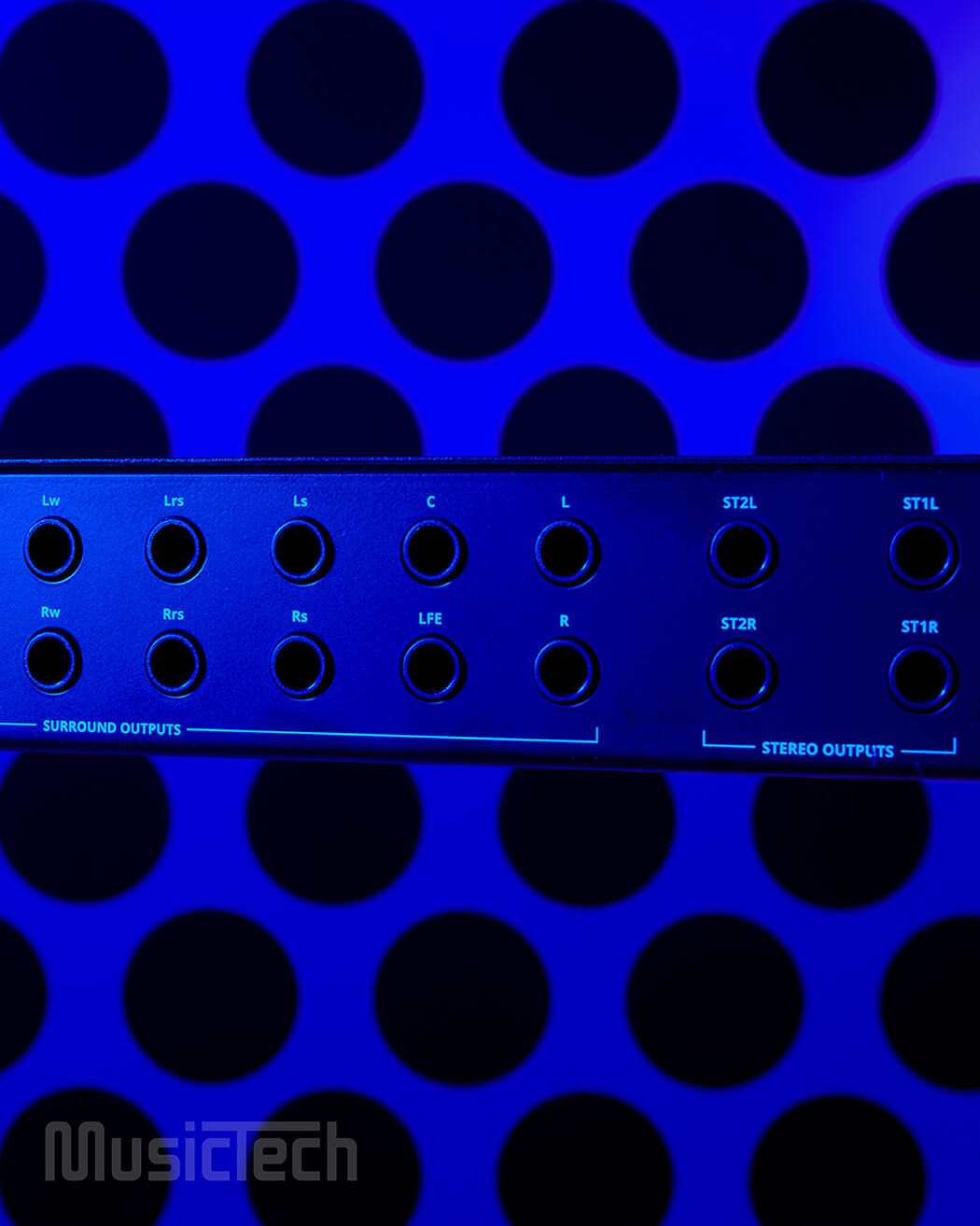
This format is completely novel for most consumers, and most engineers. The industry is still busy working out best practices and ironing out kinks. When it’s done right, Atmos mixes offer a genuinely new, and genuinely great way to listen to music. None of which threatens the relevance of stereo.
“Stereo mixing is absolutely still important and will continue to stay so, probably forever,” says Nugent. “Immersive mixing is not an absolute requirement for generally releasing music. However, to get featured on playlists on services such as Apple Music you must have an Atmos mix, and I do see things going further in this direction.”
So, stereo isn’t going anywhere. But neither is spatial audio. “Our feeling at Audient is that immersive audio is here to stay,” Allen says. “Now, the onus is on technology brands like ourselves to help democratise the ‘creation’ part of the chain by designing products like ORIA that make immersive audio more accessible.”
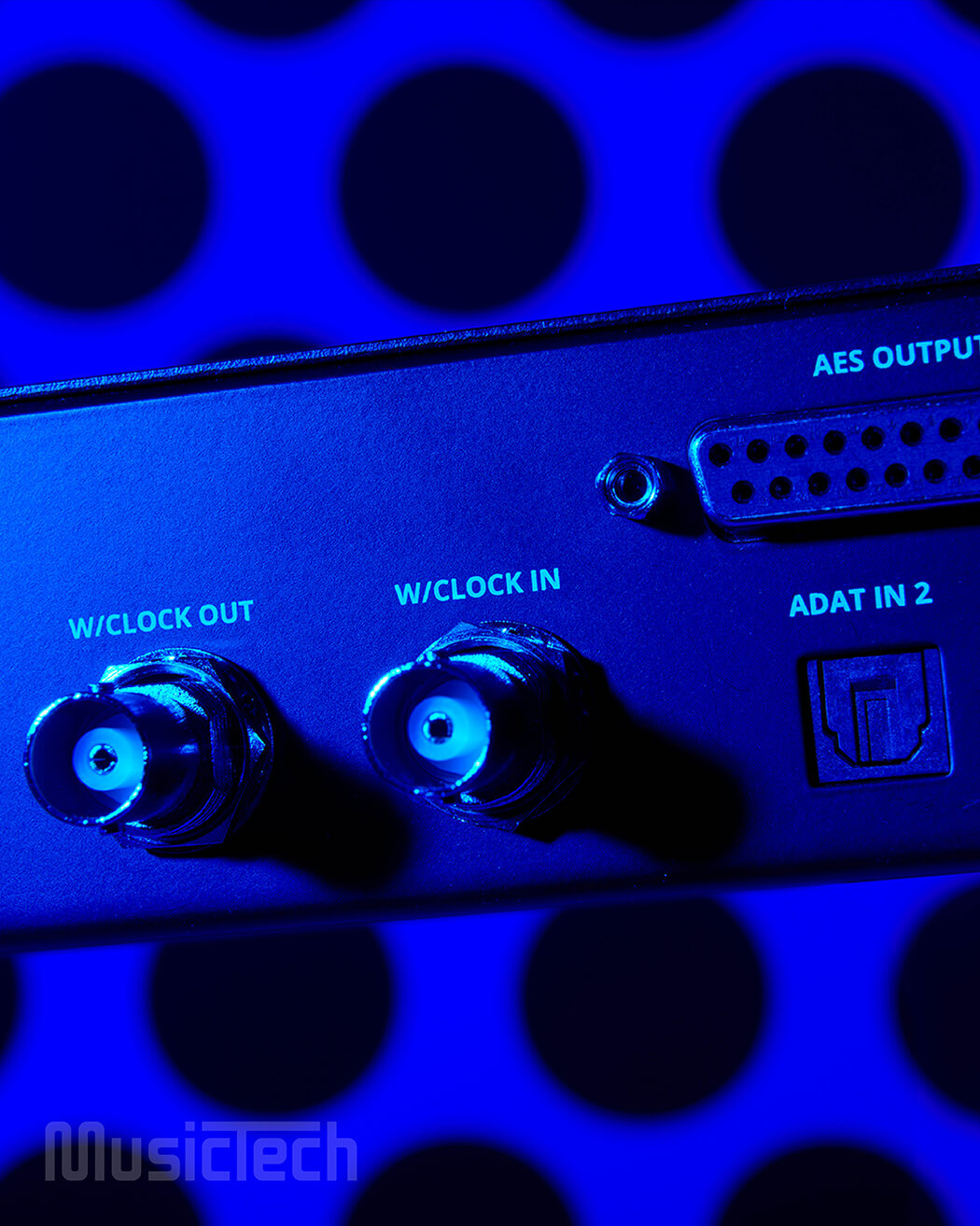
Audient has really thrown down the gauntlet here, breaking new ground to offer a level of quality, functionality, and affordability that other manufacturers may be measuring themselves against for years to come.
Based on the simple premise that working in Atmos should be easy and affordable, ORIA is a giant leap in the right direction for spatial audio – in fact, it’s the device that mix engineers needed from the get-go. So, if you’re wondering whether the time is right to jump into Atmos, the water has never been warmer.
